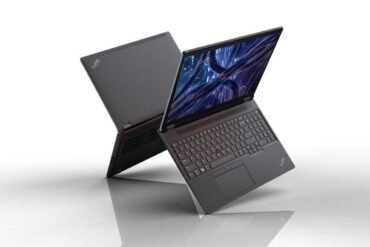Motherboard Chipset Cooling: Fans vs. Heat Sinks
Table of Contents
Introduction: Importance of Chipset Cooling
When it comes to maintaining the optimal performance of a computer, the cooling of the motherboard chipset is a crucial factor to consider. The chipset, often referred to as the heart of the motherboard, plays a vital role in facilitating communication between various components, including the CPU, memory, and peripheral devices. As it performs these tasks, the chipset generates heat, which can lead to performance degradation, stability issues, and even permanent damage if not properly managed.
Chipsets are designed to handle a certain level of heat, but when the temperature rises beyond their threshold, problems can arise. Excessive heat can cause the chipset to throttle its performance or shut down altogether, resulting in decreased system performance and potential data loss. Therefore, ensuring efficient cooling for the chipset is essential for maintaining the overall stability and longevity of the system.
There are primarily two methods used to cool the motherboard chipset: fans and heat sinks. Both options have their advantages and limitations, and the choice depends on various factors such as the chipset’s power consumption, form factor, and available space within the computer case.
- Fans: Cooling the chipset with a fan involves blowing cool air directly onto the chipset to dissipate heat. Fans are effective in providing immediate and active cooling, preventing the chipset from overheating during intensive tasks or under high ambient temperatures. However, they can be noisy and require regular maintenance to prevent dust accumulation and fan failure.
- Heat Sinks: Heat sinks, on the other hand, rely on passive cooling by utilizing metal fins to absorb and dissipate heat without the need for a fan. They are quieter, require no power, and have a longer lifespan compared to fans. However, heat sinks are not as effective in cooling under heavy loads or in confined spaces with limited airflow.
The decision between using fans or heat sinks for chipset cooling ultimately depends on the user’s specific needs and system requirements. It is important to consider factors such as noise tolerance, available space, power consumption, and the intensity of computing tasks. Properly cooling the motherboard chipset will not only enhance system performance and stability but also extend the lifespan of the components, ensuring a reliable and efficient computing experience.
Fans: Efficient Cooling Solution
Fans are a popular cooling solution for motherboard chipsets due to their efficiency and effectiveness in dissipating heat. They play a crucial role in maintaining optimal temperatures and preventing overheating, which can lead to system instability and reduced performance.
Here are some key advantages of using fans as a cooling solution:
- Enhanced airflow: Fans create a constant flow of air, which helps to remove heat from the chipset and other components on the motherboard. This ensures that the temperature remains within acceptable limits.
- Compact design: Fans are available in various sizes, making them suitable for different motherboard layouts. Their compact design allows them to be easily installed on the chipset without obstructing other components.
- Adjustable speed: Many fans come with adjustable speed settings, allowing users to customize the cooling performance based on their specific requirements. This flexibility ensures efficient cooling without excessive noise levels.
- Cost-effective: Fans are generally more affordable compared to other cooling solutions such as liquid cooling systems. This makes them a popular choice for users looking for an effective yet budget-friendly way to keep their motherboard chipsets cool.
- Compatibility: Fans can be easily installed on most motherboards, regardless of the chipset model or brand. They are compatible with both Intel and AMD chipsets, making them a versatile cooling option.
However, it’s important to consider a few factors before choosing a fan for your motherboard chipset cooling:
- Noise levels: Some fans can generate significant noise, especially at higher speeds. It’s essential to select a fan that strikes a balance between cooling performance and noise output, ensuring a quieter computing experience.
- Space limitations: While fans are generally compact, they still require some space around the chipset. It’s crucial to check the available clearance on your motherboard before purchasing a fan to ensure a proper fit.
- Cleaning and maintenance: Fans can accumulate dust and debris over time, affecting their performance. Regular cleaning and maintenance are necessary to ensure optimal cooling efficiency and prolong the lifespan of the fan.
In conclusion, fans are an efficient and cost-effective cooling solution for motherboard chipsets. They provide enhanced airflow, compact design, adjustable speed, compatibility, and affordability. However, it’s important to consider noise levels, space limitations, and maintenance requirements when choosing a fan for your motherboard chipset cooling needs.
Heat Sinks: Passive Cooling Alternative
When it comes to cooling the motherboard chipset, there are two primary options: fans and heat sinks. While fans have long been the popular choice due to their ability to quickly dissipate heat, heat sinks offer a passive cooling alternative that can be just as effective, if not more so.
A heat sink is a passive cooling device that works by transferring heat away from the chipset through thermal conduction. It consists of a metal plate or finned structure that is attached to the chipset, allowing heat to be conducted away from the hot components and dispersed into the surrounding air.
There are several advantages to using heat sinks as a cooling solution for the motherboard chipset:
- No noise: Unlike fans, heat sinks do not generate any noise as they do not require any moving parts. This can be particularly beneficial for individuals who prefer a quiet computing environment.
- Reliability: Heat sinks have no mechanical parts that can fail or break down over time. This means they have a longer lifespan compared to fans, reducing the need for frequent replacements.
- Low maintenance: Since heat sinks do not have any moving parts, they require minimal maintenance. There are no fan blades to clean or replace, making them a hassle-free cooling solution.
- Space-saving: Heat sinks are typically smaller and more compact than fans, making them ideal for systems with limited space or small form factors.
- Energy efficiency: Heat sinks do not require any additional power source to operate, unlike fans that need electricity to run. This makes heat sinks a more energy-efficient cooling option.
While heat sinks offer many advantages, it’s important to note that they may not be suitable for systems that generate excessive heat or require active cooling. In such cases, a combination of heat sinks and fans may be necessary to maintain optimal temperatures.
In conclusion, heat sinks provide a viable passive cooling alternative to fans for cooling the motherboard chipset. They offer noiseless operation, increased reliability, minimal maintenance, space-saving design, and energy efficiency. However, it’s crucial to consider the specific requirements of your system before deciding on the best cooling solution.
Pros and Cons: Comparing Fans and Heat Sinks
When it comes to cooling the chipset on your motherboard, two popular options are fans and heat sinks. Each has its own advantages and disadvantages, which we will explore in this article.
Fans:
- Fans provide active cooling by blowing air directly onto the chipset, effectively dissipating heat.
- They are generally more effective at cooling the chipset compared to heat sinks alone.
- Fans come in various sizes and can be customized to fit your specific motherboard and chipset.
- They are easy to install and can be replaced or upgraded when needed.
- Some fans also come with built-in LED lights, adding a visual appeal to your system.
- However, fans can be noisy, especially if they run at high speeds. This can be a drawback for users who prefer a quieter computing experience.
- Fans also consume additional power, which may be a concern for those looking to minimize power consumption.
Heat Sinks:
- Heat sinks provide passive cooling by utilizing metal fins to dissipate heat without the need for a fan.
- They are typically quieter than fans since they don’t produce any noise themselves.
- Heat sinks are more energy-efficient as they don’t require additional power to operate.
- They are generally more reliable since they have no moving parts that can fail or break.
- However, heat sinks alone may not be sufficient for cooling high-performance chipsets, especially during intensive tasks.
- Heat sinks are also bulkier and may require more space inside your computer case.
- Furthermore, heat sinks can be more challenging to install, especially if they require additional mounting hardware.
Overall, the choice between fans and heat sinks for chipset cooling depends on your specific needs and preferences. If you require efficient cooling for high-performance chipsets or prefer a quieter system, fans may be the better option. On the other hand, if you prioritize energy efficiency, reliability, and a compact build, heat sinks may be more suitable. It’s also worth considering a combination of both, using a fan and heat sink together, for optimal cooling performance.
Conclusion: Choosing the Right Cooling Method
When it comes to cooling your motherboard chipset, there are two main options to consider: fans and heat sinks. Both methods have their advantages and disadvantages, and the choice ultimately depends on your specific needs and preferences.
Fans provide active cooling by circulating air around the chipset, helping to dissipate heat more effectively. They are generally more efficient at cooling than heat sinks alone. However, fans can be noisy and may require regular maintenance to keep them running smoothly. If you are someone who values performance and doesn’t mind a little extra noise, a fan-based cooling solution may be the way to go.
On the other hand, heat sinks offer passive cooling by using metal fins to draw heat away from the chipset and dissipate it into the surrounding air. They are typically quieter than fans and require no moving parts, making them more reliable in the long run. Heat sinks are also often more compact, making them a suitable choice for smaller systems or those with limited space for cooling components.
When choosing between fans and heat sinks, it’s important to consider factors such as the size and layout of your motherboard, the level of noise you are willing to tolerate, and the specific cooling requirements of your chipset. Additionally, it’s worth noting that some cooling solutions combine both fans and heat sinks for optimal performance.
Ultimately, the key is to strike a balance between effective cooling and noise levels or maintenance requirements. If you are a gamer or someone who uses resource-intensive applications, a fan-based cooling solution may be the better choice. However, if you prioritize a quiet and reliable system with minimal maintenance, a heat sink could be the ideal option for you.
Before making a decision, it’s always a good idea to research and compare different cooling solutions to find the one that best fits your specific needs. Consider reading customer reviews, seeking expert advice, or consulting your motherboard’s manufacturer for recommendations.
- Weigh the pros and cons of fan-based cooling versus heat sinks.
- Consider the size and layout of your motherboard.
- Assess your tolerance for noise and maintenance requirements.
- Research and compare different cooling solutions.
By carefully considering these factors, you can make an informed decision and ensure that your motherboard chipset remains cool, extending its lifespan and enhancing the overall performance of your system.

























